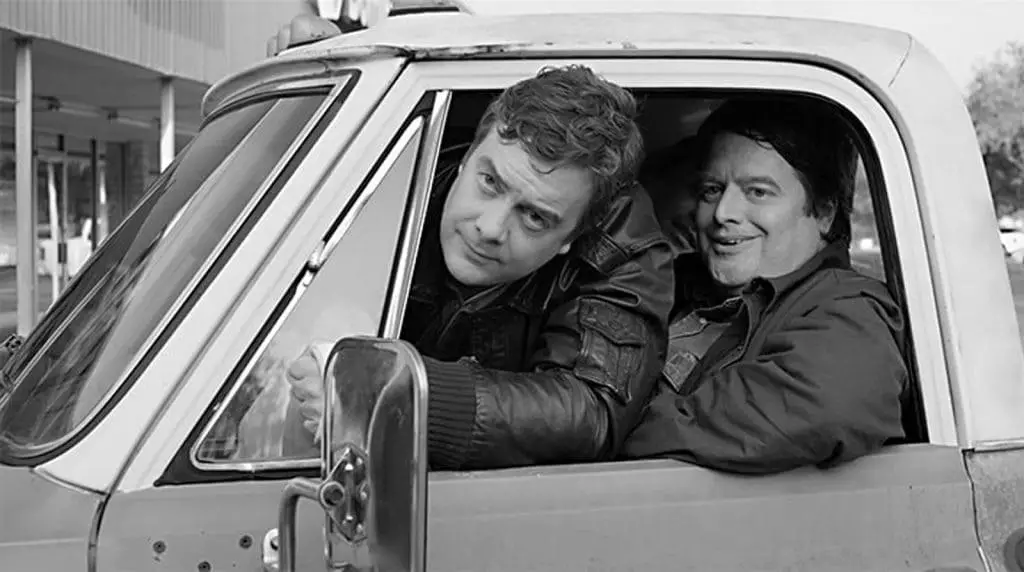
After extensive film festival exposure comes “No Place on Earth,” a well-blended British-German-American documentary drama from filmmaker Janet Tobias, who is no stranger to the genre (via CBS’ “60 Minutes,” “Dateline NBC”, PBS’s “Life 360,” and the award winning “Juvenile Justice”). It’s a revealing look at over three dozen Ukrainian Jews who survived WWII by hiding in underground caves for over 500 days. For Tobias, this is her first small step into the theatrical marketplace (after limited runs, it will appear on The History Channel), but one that should bring her wider public attention. Tobias, through her production shingle Sierra/Tango Productions, is now making films for multi-platform delivery, that is, when she’s not dabbling in her other chores in the medical field.
Collaborating with Chris Nicola, a spelunker who spent decades in law enforcement, and who co-authored a book detailing the story that became the basis for this film— he discovered the gypsum caves in the early 1990s— Nicola’s on- and off-screen enthusiasm gets the viewer excited about this tale, and the low-lit Priest’s Grotto Cave shots provide a shared window into the tragedies of past generations.
In 1939 Esther Stermer, of Korolowka, was a Ukrainian businesswoman who saw the approaching “black clouds” as Hitler began attacking Europe. Her sons Saul and Sam and granddaughters Sonia and Sima Dodyk, sit before us, 67 years removed from their underground seclusion, now still in the dark with stark, shadowy lighting hitting their profiles, as they recollect their family’s horrifying tale. While their friends were perishing above ground, they were shuddering below. Tobias combines their (and Nicola’s discovery) story with a subtle yet harrowing graphic “dramatic reconstruction” formula (mostly non-speaking actors in period clothing and surroundings recreating the events as they are described by the remnants of this family), for an emotional punch that does not detract from the honesty of the tale surrounding how a few Jews were able to survive. The collaborative group of cinematographers (César Charlotte, Eduard Grau, Sean Kirby, and Peter Simonite) offer a provocative dimness, while John Piscitello’s score (performed by the Hollywood Studio Symphony) effectively links the two styles.
Early in the film, Sonia says she pretended the cave was in a castle as others in the family tell of the experience, building a new candle-lit “home.” By 1943, 38 Jews would be gathered in a much larger lower cave than the first. The women never went out, just the men, from each of the several families hiding out in the dark.
The final 15 minutes allows for the Stermer clan and their descendants to return from their homes in Canada and the United States to the film’s center stage, in a 2010 excursion to the Ukraine. To an overcast, gloomy, damp landscape that clears, briefly, as they walk the roads not traveled on for nearly seven decades. The painful memories don’t disappear. Voices crack in moments of recollected despair. Nicola marvels at their feat and considers these amateur cave dwellers “world class cavers.” As Sam and Saul head down below, the Stermer youngsters flash on the stories they heard from their grandparents years earlier. Yes, you’ll have a lump in your throat as the miracle story draws to its end, especially when you learn that the legacy of the 38 has blossomed to more than 125 children, grandchildren, and great-grandchildren. Yes, just like in “Schindler’s List.” And, yes, just as effective.
Reminiscent of Agnieszka Holland’s 2011 feature “In Darkness,” a fictionalized account of another Holocaust survival story—this one involving the Ukrainian sewers of Lvov (today known as Lviv), “No Place on Earth” is a satisfying hybrid that allows another worthwhile glimpse into courage during times of horrible tragedy.
